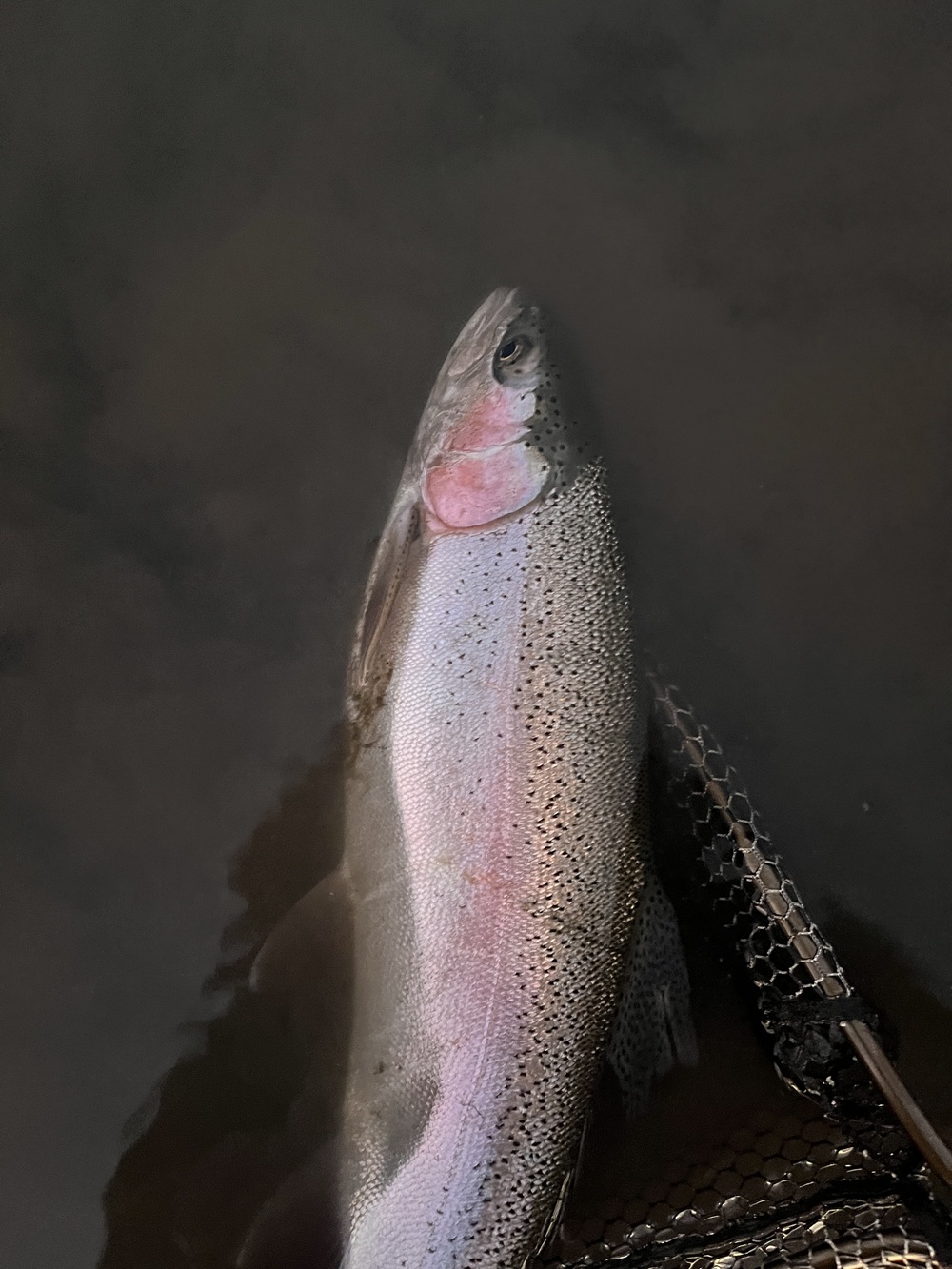
During the cooler months of the year, some of the larger food items available to trout become less numerous. In response, trout can turn their attention to smaller food sources such as chironomid, commonly called midge. What these insects lack in size, they more than make up for in nutritional value and quantity. Both lakes and slower-moving rivers contain millions of these very successful insects. It’s not surprising then that midge make up a significant percentage of the diet of trout in the lakes of Victoria, NSW and Tassie.
Buzzer-style flies are commonly used to imitate midge pupa – an important part of the chironomid lifecycle for trout and flyfishers alike. The most popular buzzer colours are green, red and black. We have covered the first two colours in previous Effective Flies articles.

A winter midge feeder on the Zebra Buzzer.
This time, we are focusing on black, and my favourite pattern when these darker pupa are around, is the Zebra Buzzer. I generally fish this pattern in a team with one of the other colours. When combined with a Red Buzzer, I fish the Zebra on the dropper; when combined with an Olive Buzzer, I fish the Zebra on the point.
Materials
Hook – size 14 grub hook.
Thread – 8/0 black
Bead – 2mm silver-coloured brass (not tungsten), or glass.
Rib – Fine silver wire
Thorax – Peacock herl
Coating – Clear nail varnish
Tying instructions
- Slide the bead onto the hook.
- Commence tying in the silver wire rib at the head of the fly, tying to the rear of the hook with touching turns of thread, then returning to the head of the fly again with touching turns of thread.
- Rib the body to the head with 1mm-wide turns.
- Then whip finish and cut the thread.
- Coat the entire body twice with clear nail polish. (A fly spinner is useful here to create smooth uniform bodies. I usually tie these flies in batches, allowing the flies to dry before commencing the final stages.)
- Catch in a thin strand of peacock herl and twist your thread around the herl, thereby strengthening and protecting it.
- Whip finish behind the bead.
Other fishing tips for the Zebra Midge
Buzzers can be fished in many ways, with one of the most common being under an indicator or buoyant dry fly, such as the Claret Carrot. Buzzers can also be fished as a team on a slow, steady retrieve without the use of an indicator, or employing the washing line technique. If fishing buzzers without an indicator, try to keep your floating line as straight as possible to help detect takes.
Most importantly, whatever technique you are using , buzzers should be fished either static or very slowly – real midge pupa are not quick swimmers!











